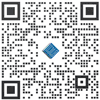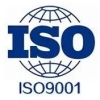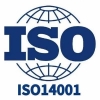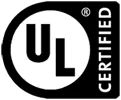From chip to function: Future trends in wearable devices
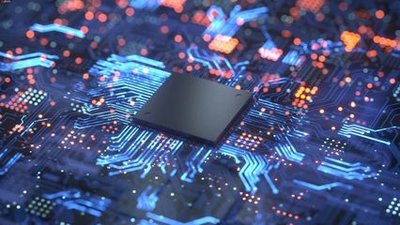
As technology runs faster and faster, wearables are slowly changing our lives, from the simple gait monitor at the beginning to smart watches, health trackers, and augmented reality glasses, which are becoming more and more powerful in various fields.
1. Chip technology stuff
The key to wearable devices is its chip technology, and the performance of this chip is directly related to the function and endurance of the device! In recent years, microelectronics technology is advancing by leaps and bounds, the size of the chip is getting smaller and smaller, the power consumption is getting lower and lower, and the computing power is constantly rising. For example, processors based on 7nm or smaller process nodes can achieve higher computing performance, while saving power and making the battery life of portable devices longer.
In the future, the chip is designed to go in the direction of higher integration and specialization, that is, several functional modules are integrated into a chip through the system-on-chip (SoC). As a result, devices can be made smaller and more versatile, and product designers can achieve more functions in that limited small place. For example, integrating sensors, data processing units and communication modules into a single chip can greatly improve the portability and usability of wearable devices.
2. Various sensor changes
As sensor technology continues to move forward, wearable devices will be able to integrate more diverse sensors. These sensors can not only monitor basic health indicators such as heart rate and gait, but also extend to blood oxygen levels, body temperature, psychological state, and even mood analysis. More bovine biosensors can also provide more accurate health monitoring data, and give users a personalized health management plan.
In the future, sensors will have to develop in the direction of miniaturization and intelligence. A new generation of sensors can detect changes in the environment in real time and automatically adjust the functions of the device. For example, if it detects that the temperature around the user is too high, the device can turn on a cooling function or provide a meditation guide when the user is anxious.
3. The incorporation of artificial intelligence
Artificial intelligence (AI) is developing at a rapid pace, which can profoundly change the experience of using wearable devices. By stuffing machine learning algorithms into devices, wearables can better understand user behavior patterns and make smart decisions based on that data. Like the smart watch, it analyzes the user's sleep patterns and automatically adjusts the alarm time to wake the user up at the right stage of sleep.
At the same time, AI can also provide users with personalized health advice by analyzing the data. For example, based on the user's exercise data and physiological status, the device can recommend appropriate exercise programs or dietary guidelines to help the user achieve health goals. This intelligent health management can not only improve the quality of life of users, but also make them more dependent on the device.
4. Cooperation between 5G and IoT
With the increasing popularity of 5G networks, future wearable devices will be able to achieve higher quality real-time data transmission, as well as richer networking functions! The low latency and high bandwidth brought by 5G technology will allow wearables to connect with more smart devices. Users will be able to monitor their health at any time through the wearable device, and can also talk to doctors in real time to get professional health advice.
At the same time, the application of the Internet of Things (IoT) can also make wearable devices more powerful. For example, users can control smart appliances in their homes through wearable devices, or receive real-time feedback from smart homes. In this way, wearable devices can not only monitor health, the application scenario is wider, and the overall user experience can also be improved.
5. The combination of augmented reality and virtual reality
In the future, wearable devices will also deeply cooperate with augmented reality (AR) and virtual reality (VR) technologies to introduce new usage scenarios and experiences. AR glasses can overlay virtual information into the real world, so that users can get real-time navigation information or training guidance when they are exercising. This will improve the efficiency of the exercise and reduce the safety risk!
At the same time, the development of VR technology also allows wearable devices to play a greater role in games, education, and medical industries. For example, VR fitness equipment can attract users through the immersive gaming experience, while combining real-time analysis of health data to improve the results of exercise.
6. Health management and data privacy
Future wearable devices will be more in-depth in health monitoring, tracking the user's health changes, and giving timely feedback. However, as these capabilities become more powerful, the issue of data privacy and security becomes more and more obvious. The user's health data is very sensitive, and how to protect the user's privacy is a challenge that device manufacturers must face well.
In order to deal with these problems, future wearable devices will need to have stricter data security measures, with advanced encryption technology to ensure that users' data will not be obtained by unauthorized third parties. At the same time, device manufacturers also need to clarify the user's right to know and choose to ensure that users can view and delete their health data at any time.
Conclusion
The future of wearable devices can be a revolutionary change in many aspects - from more advanced chip technology, to diverse sensor integration, from the deep use of artificial intelligence, to the extensive application of 5G and IoT, and then to the combination of AR and VR, these developments will certainly make the function of wearable devices continue to expand. Although it is impossible to predict the exact timing of the implementation of the specific technology, it is certain that future wearable devices will profoundly affect our health management and lifestyle.
您可能感興趣的產品
 |
CCR0512FPSXXZ01A | AC/DC CONVERTER 12V 500W | 5040 More on Order |
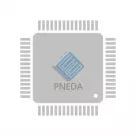 |
UVXS0606A0X43-SRZ | DC DC CONVERTER | 2574 More on Order |
 |
PDT012A0X3-75SRZ | DC DC CONVERTER | 5598 More on Order |
 |
TJX120A0X3-SPZ | DC DC CONVERTER | 8100 More on Order |
 |
EHW007A0B841Z | DC DC CONVERTER 12V 84W | 8874 More on Order |
 |
EHHD020A0F64Z | DC DC CONVERTER 3.3V 66W | 3762 More on Order |
 |
ESTW025A0F641-HZ | DC DC CONVERTER 3.3V 83W | 4500 More on Order |
 |
EQW040A0S1R041-SZ | DC DC CONVERTER 1V 40W | 4086 More on Order |
 |
EQW010A0B641Z | DC DC CONVERTER 12V 120W | 8046 More on Order |
 |
SW003A0A9Z | DC DC CONVERTER 5V 15W | 4320 More on Order |
 |
QW010A0A1Z | DC DC CONVERTER 5V 50W | 7254 More on Order |
 |
HC005A0F1-SZ | DC DC CONVERTER 3.3V 17W | 5004 More on Order |
 |
KW015A0F41-SRZ | DC DC CONVERTER 3.3V 50W | 4968 More on Order |
 |
PIM200FZ | DC DC CONVERTER 3.3V 200W | 6138 More on Order |
 |
ATA010A0X3Z | DC DC CONVERTER 0.8-5.5V 55W | 2754 More on Order |
 |
QW020A0Y | DC DC CONVERTER 1.8V 36W | 2070 More on Order |
 |
QHW100A71 | DC DC CONVERTER 5V 100W | 3204 More on Order |
 |
LW030A1 | DC DC CONVERTER 5V 30W | 7092 More on Order |
 |
LW015F | DC DC CONVERTER 3.3V 15W | 3060 More on Order |
 |
QBVW033A0B41-PZ | DC DC CONVERTER 12V 400W | 6120 More on Order |
 |
JRCW450R4Z | DC DC CONVERTER 32V 450W | 7938 More on Order |
 |
NSR060A0X43Z | DC DC CONVERTER 0.6-5V 300W | 8154 More on Order |
 |
SW001A2B91Z | DC DC CONVERTER 12V 14W | 15468 More on Order |
 |
APTS012A0X3-SRZ | DC DC CONVERTER 0.7-5.5V 66W | 451 More on Order |
